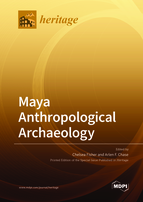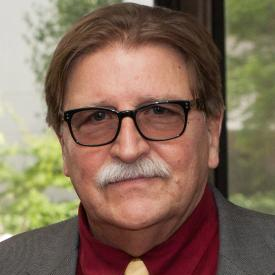Maya Anthropological Archaeology
A special issue of Heritage (ISSN 2571-9408). This special issue belongs to the section "Archaeological Heritage".
Deadline for manuscript submissions: closed (31 May 2020) | Viewed by 55490
Special Issue Editors
Interests: anthropological archaeology; environmental anthropology; historical ecology; food and agriculture; Maya
Interests: anthropological archaeology; environmental anthropology; historical ecology; food and agriculture; Maya
Special Issue Information
Dear Colleagues,
In the introduction to her book Maya Cultural Heritage: How Archaeologists and Indigenous Communities Engage the Past, Patricia McAnany (2016:6) urges archaeologists who work in the Maya region (i.e., southern Mexico, Guatemala, Belize, western El Salvador, and Honduras) “to leave the quiet jungle path”—that is, the mindset where many archaeologists assert exclusive mastery of the past—“and engage with an archaeological practice that is more uncertain but more inclusive”. This place of uncertainty and inclusivity to which McAnany and others steer us is the busy, often fraught, intersectional space of cultural heritage, where multiple and diverse sorts of people command simultaneous and often competing claims to the past.
As more archaeologists working in the Maya region enter this intersection, we are seeing, in real-time, an archaeology that willfully and thoughtfully engages with cultural heritage to better preserve the past, while yielding new forms of knowledge. Aside from making for better research, archaeological engagement with Maya cultural heritage has proven itself a capable vehicle for social and environmental advances. In addition, heritage programs implemented throughout the Maya region are showing how equitable partnerships with local communities and governments move archaeological research forward in modern nation-states. Yet, even with all of these positive reasons that Maya archaeologists should move into the spaces of cultural heritage, still, relatively few are actually making those moves—and understandably so; while conceptually the case for engaging with cultural heritage may be easy, the on-the-ground employment of such practices is unpredictable, chaotic, and often difficult.
The goal of this Special Issue aims to compile an open-access repository of “on-the-ground” narratives from Maya archaeologists who have positioned themselves, their projects, and their practices within larger discussions of cultural heritage. Increasing the visibility of these endeavors, while embracing a frank discussion of the positives and negatives they entail, offers a gestalt model of the ground-level efficacy and experience of heritage-oriented archaeology in the Maya region. Rather than focus on the products of their work, contributors are encouraged to emphasize the process—the logistics, the practicalities, and the nitty-gritty—that played out on the ground. How did these approaches spawn new research questions? How did they impact knowledge production? What challenges arose, and how were they managed? How were practices prevented from entering a neo-colonialist realm?
By contextualizing research alongside a frank and transparent discussion of the surprises, improvisations, and setbacks met along the way, contributors will co-create a widely accessible collective resource meant to catalyze further archaeological engagement with cultural heritage work within the Maya region, as well as providing examples and lessons that may prove to be useful globally. With this spirit, we invite contributions dealing with a range of topics, including, but not limited to, the following:
- Building and sustaining mutually beneficial partnerships with local and Indigenous communities and governments at all levels
- Local heritage tourism at archaeological sites
- Globalized heritage tourism (i.e., UNESCO World Heritage sites) in the Maya region
- Collaborative protection and conservation of archaeological resources
- Navigating partnerships with non-profits and for-profits
- Measuring the mutual benefits and, in some cases, contrapositives of community partnerships over time
- Collaboratively designing heritage programs for social and environmental goals
- Modes of cultural heritage programs (e.g., educational activities, workshops, radio shows, cooking demos, and community mapping)
- Development of local cultural heritage centers (e.g., local museums) by local communities
- Ensuring that foreign and non-local researchers are not neo-colonialists in their approaches to cultural heritage
McAnany, P. (2016). Maya Cultural Heritage: How Archaeologists and Indigenous Communities Engage the Past. Rowman & Littlefield, Lanham, MD.
Asst. Prof. Dr. Chelsea R. Fisher
Prof. Dr. Arlen F. Chase
Guest Editors
Manuscript Submission Information
Manuscripts should be submitted online at www.mdpi.com by registering and logging in to this website. Once you are registered, click here to go to the submission form. Manuscripts can be submitted until the deadline. All submissions that pass pre-check are peer-reviewed. Accepted papers will be published continuously in the journal (as soon as accepted) and will be listed together on the special issue website. Research articles, review articles as well as short communications are invited. For planned papers, a title and short abstract (about 100 words) can be sent to the Editorial Office for announcement on this website.
Submitted manuscripts should not have been published previously, nor be under consideration for publication elsewhere (except conference proceedings papers). All manuscripts are thoroughly refereed through a single-blind peer-review process. A guide for authors and other relevant information for submission of manuscripts is available on the Instructions for Authors page. Heritage is an international peer-reviewed open access monthly journal published by MDPI.
Please visit the Instructions for Authors page before submitting a manuscript. The Article Processing Charge (APC) for publication in this open access journal is 1600 CHF (Swiss Francs). Submitted papers should be well formatted and use good English. Authors may use MDPI's English editing service prior to publication or during author revisions.







